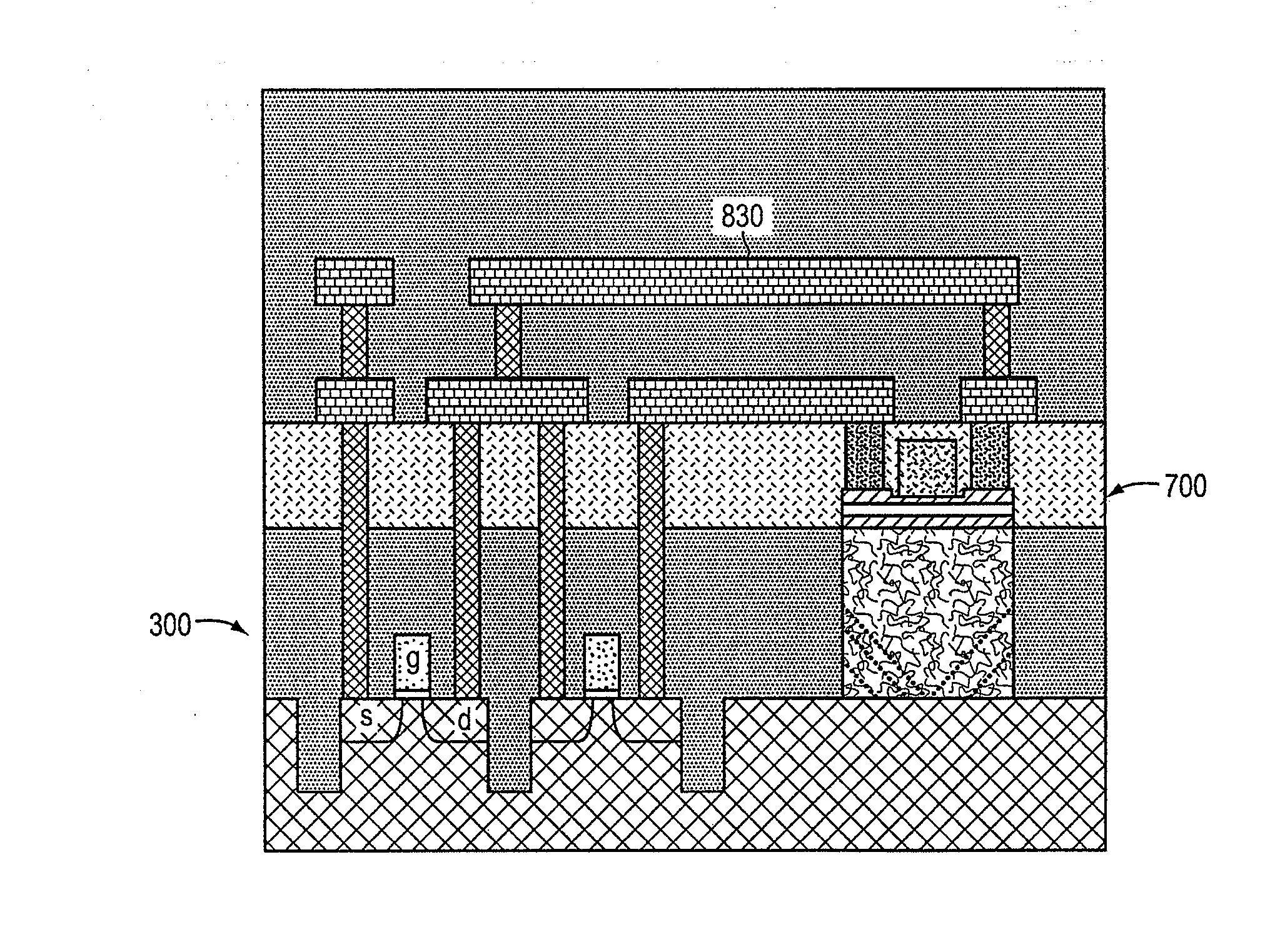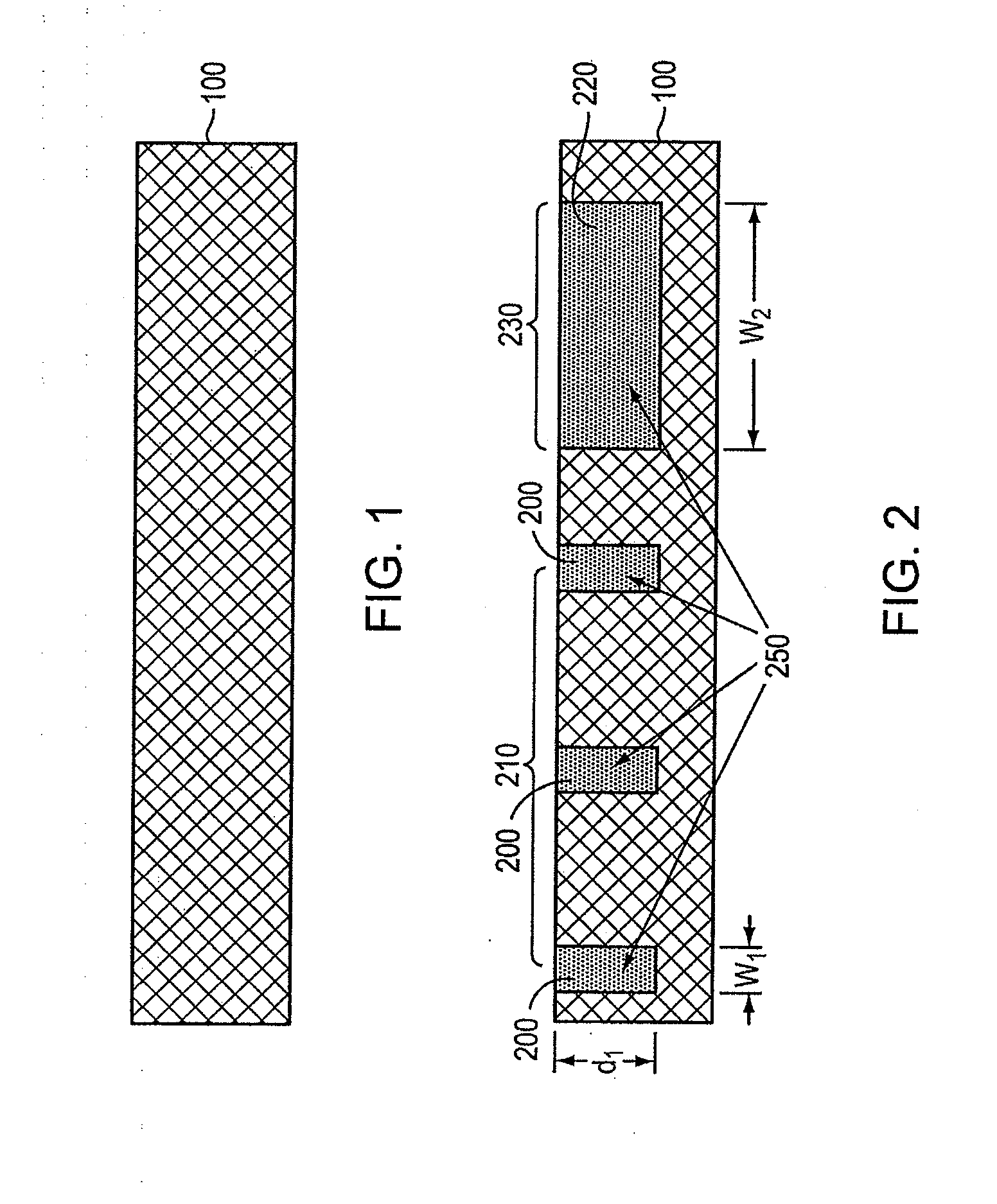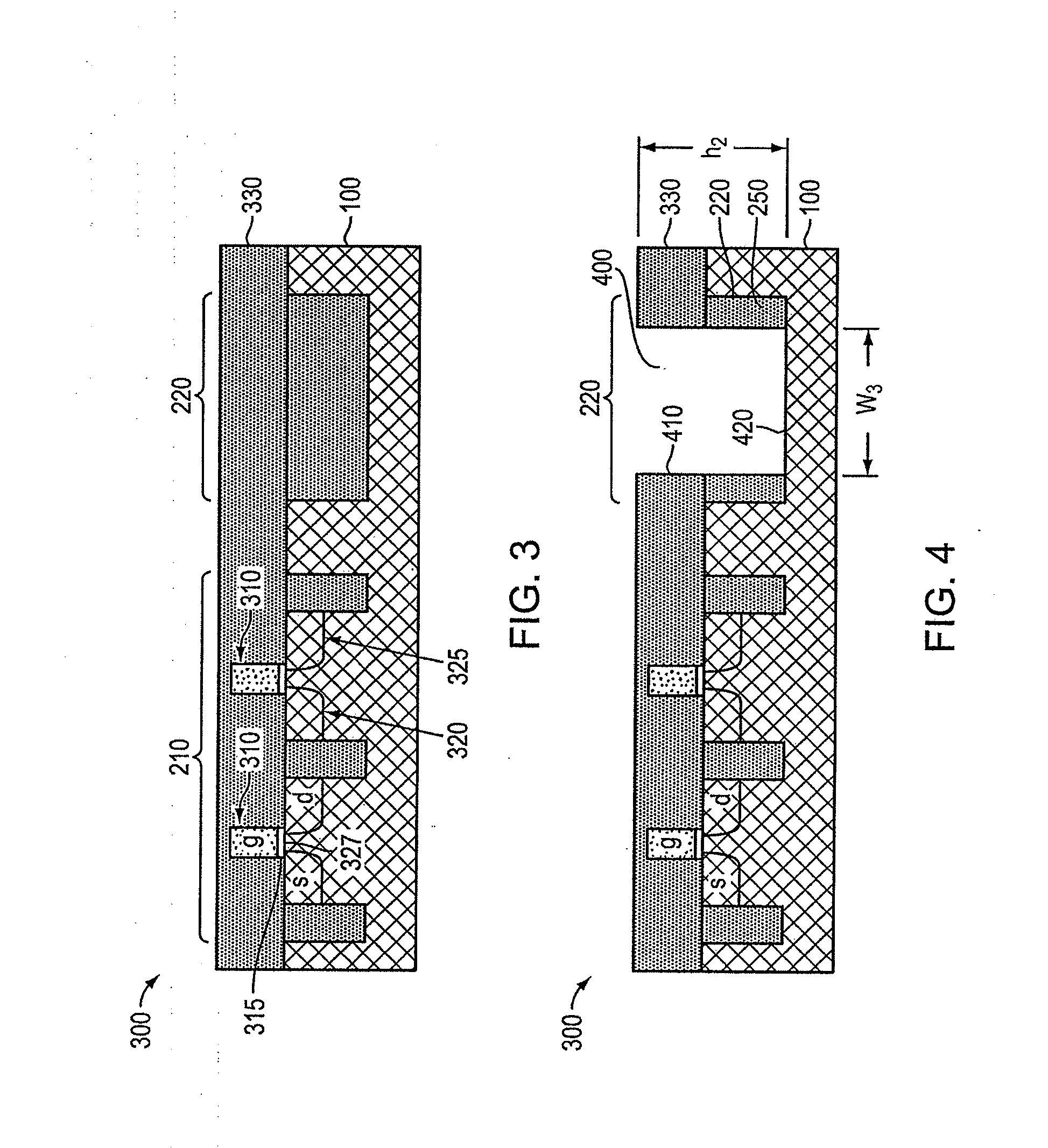Aspect ratio trapping for mixed signal applications
a technology of mixed signal and aspect ratio, applied in the field of semiconductor processing, can solve the problems of inability to connect si and iii-v devices, inability to accept dislocation defect levels, and inability to meet the requirements of cmos front- and back-end processing restrictions,
- Summary
- Abstract
- Description
- Claims
- Application Information
AI Technical Summary
Benefits of technology
Problems solved by technology
Method used
Image
Examples
Embodiment Construction
[0034] Referring to FIG. 1, a substrate 100 includes a crystalline semiconductor material. The substrate 100 may be, for example, a bulk silicon wafer, a bulk germanium wafer, a semiconductor-on-insulator (SOI) substrate, or a strained semiconductor-on-insulator (SSOI) substrate. The substrate 100 may include or consist essentially of a first semiconductor material, such as a group IV element, e.g., germanium or silicon. In an embodiment, substrate 100 includes or consists essentially of (100) silicon.
[0035] ART is used to create a relatively defect-free portion of an epitaxial region disposed in an opening over the substrate. As used herein, ART refers generally to the technique(s) of causing defects to terminate at non-crystalline, e.g., dielectric sidewalls, where the sidewalls are sufficiently high relative to the size of the growth area so as to trap most, if not all, of the defects. This technology allows the growth of an epitaxial material directly in contact with a lattice-...
PUM
 Login to View More
Login to View More Abstract
Description
Claims
Application Information
 Login to View More
Login to View More - R&D
- Intellectual Property
- Life Sciences
- Materials
- Tech Scout
- Unparalleled Data Quality
- Higher Quality Content
- 60% Fewer Hallucinations
Browse by: Latest US Patents, China's latest patents, Technical Efficacy Thesaurus, Application Domain, Technology Topic, Popular Technical Reports.
© 2025 PatSnap. All rights reserved.Legal|Privacy policy|Modern Slavery Act Transparency Statement|Sitemap|About US| Contact US: help@patsnap.com



